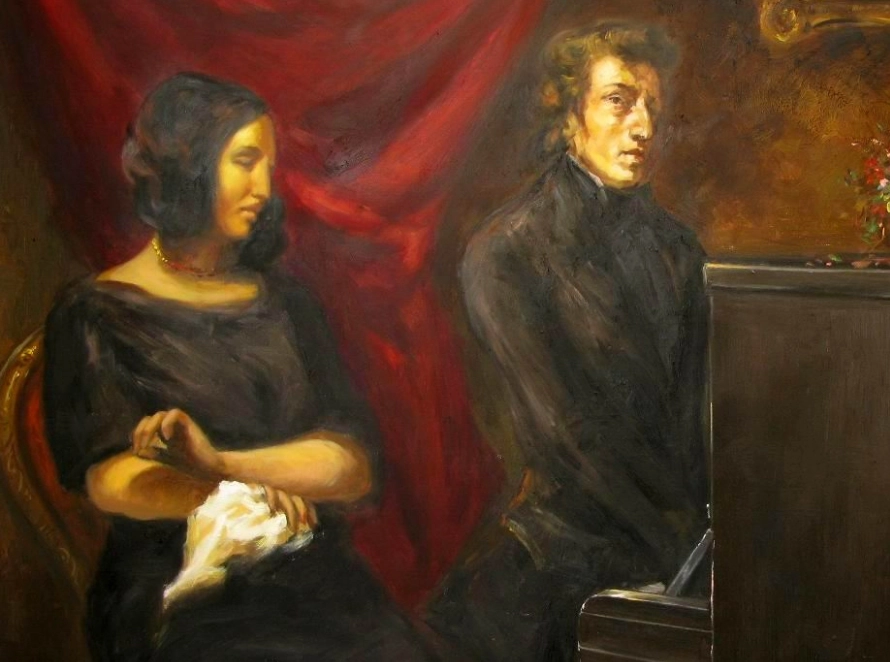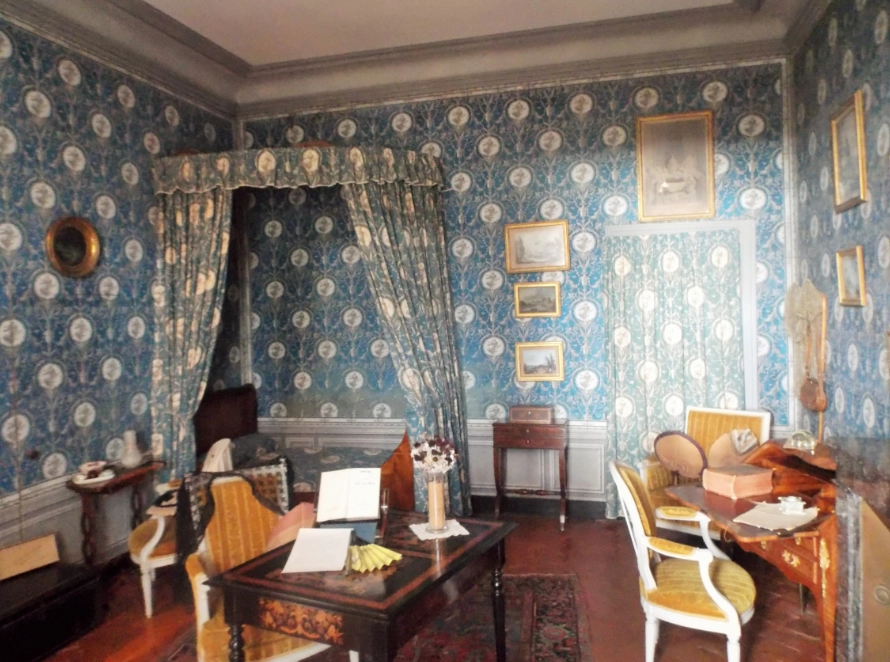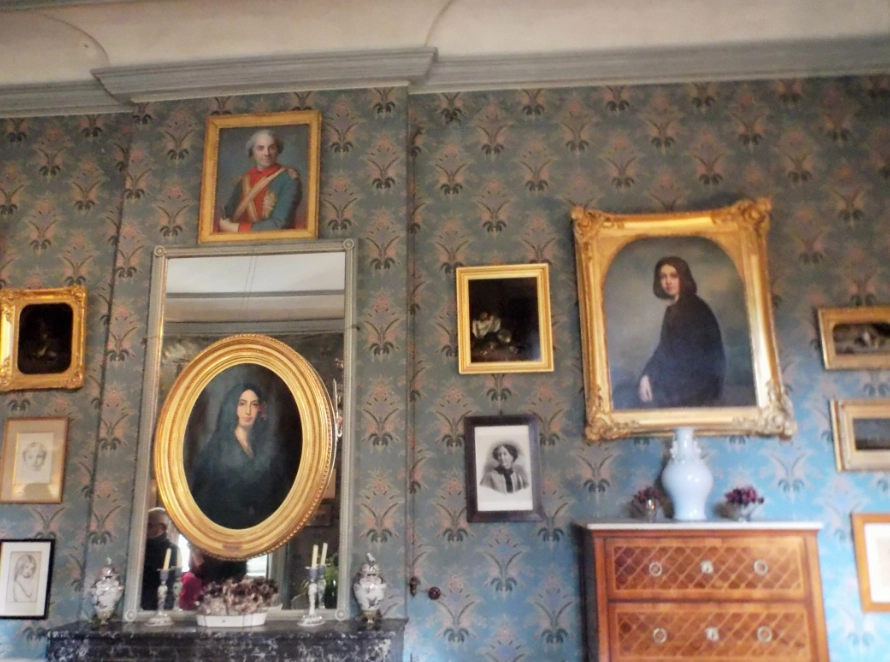When we lived near Argenton-sur-Creuse, Gargilesse became a regular escape, just a short drive up winding country roads to where the world seemed to slow down. This tiny, sun-dappled village tucked away in the lush valley of the Creuse is nothing short from magical. Here, among steeply pitched roofs and cobbled lanes, stands a house that once belonged to one of France’s most extraordinary writers: George Sand. This is where she sought solace, inspiration, and a bit of mischief
The woman behind the name
George Sand wasn’t born with that name. She started life as Amantine Lucile Aurore Dupin, a Parisian by birth but a countrywoman at heart. Her childhood was spent at Nohant, the family estate in Berry, where she developed a deep love for the countryside and its people. This love would shape her writing and her life.
By the time she was in her late twenties, she had already made a name for herself, literally. After a brief collaboration with writer Jules Sandeau, she published her first solo novel, Indiana, under the pen name George Sand. It was a bold move, especially for a woman in 1832. But boldness was a trait that would define her.
Her choice of a male pseudonym was literary strategy and it was also a statement. In an era when women were expected to be seen and not heard, George Sand wore trousers, smoked cigars, and lived life on her own terms. She was a scandal, a sensation, and, most importantly, a brilliant writer. By the 1840s, she was more famous in England than Victor Hugo or Honoré de Balzac!

Life, love, and literature
George Sand’s personal life was as dramatic as her novels. She married young, but the marriage was unhappy. She left her husband, took lovers (including the poet Alfred de Musset and the composer Frédéric Chopin), and raised her children with a fierce independence. She was a woman who refused to be boxed in by convention, whether in love, dress, or politics.
Her writing was just as daring. She tackled issues like women’s rights, the plight of the poor, and the stifling nature of marriage. Her novels, Indiana, Lélia, La Mare au Diable, François le Champi, and La Petite Fadette, are filled with passion, social criticism, and a deep empathy for the underdog. She wrote more than 70 novels, along with plays, political essays, and a sprawling autobiography, Histoire de ma vie.
But it was in her rustic novels, inspired by the landscapes and people of Berry, that she found her true voice. These stories, set in the countryside she adored, are filled with warmth, humour, and a profound sense of humanity
Reimagining a woman’s place
Sand wanted to dismantle the rigid boundaries that defined what a woman could be, say, or do. Her writing reflected this independence. In Lélia (1833), she created a heroine who rejects both marriage and motherhood, choosing instead to live for her own intellectual and emotional fulfillment. The novel was so controversial it was banned in some places, but Sand refused to tone it down. She believed women deserved more than society offered them, and she said so, loudly and often.


The call of Gargilesse
For all her fame and notoriety, George Sand was a woman who needed solitude. She found it in Gargilesse, a village that seems to have been dreamed up by a romantic novelist. In June 1857, while walking along the river Creuse with her lover, the engraver Alexandre Manceau, she stumbled upon the village at sunset. “You have to arrive at sunset: everything has its time to be beautiful,” she wrote later.
She was smitten. The village, with its stone houses, winding lanes, and air of gentle mystery, was the perfect retreat. Manceau, ever attentive, bought her a small house there, a simple cottage with dry-stone walls and a roof of local tiles. They named it “Villa Algira,” after a rare butterfly they had discovered on one of their walks.
The house was modest compared to her grand estate at Nohant. But that was part of its charm. Here, she could escape the dramas of family life and find the peace she needed to write. She worked on novels like Les Beaux Messieurs de Bois-Doré and L’Homme de Neige in this quiet corner of Berry, surrounded by the sounds of the river and the chatter of birds.
The Villa Algira: George Sand’s sanctuary
If you would like to feel her presence, step inside her house the Villa Algira! The house is small, just four rooms, but it’s filled with the echoes of her life. There are objects that belonged to her, drawings by her son Maurice, and collections of natural curiosities that reflect her love of the world around her. The atmosphere is warm and intimate.
George Sand’s time in Gargilesse was punctuated by walks along the river, visits to the village château, and long conversations with local artisans. She listened to peasant legends and wove them into her stories, creating a tapestry of rural life that still feels fresh and alive. She was, in many ways, a bridge between the old world and the new, a woman who celebrated tradition but was never afraid to challenge it.
The house became a refuge, a place where she could be herself. “It is calm and not agitated by the distractions and sometimes the family quarrels that populate the atmosphere of Nohant,” she wrote. Here, she found the solitude she craved, and the inspiration to keep writing

The legacy of George Sand
Sand’s influence went far beyond her own time. She inspired writers like George Eliot and Virginia Woolf, who admired her courage and her vision. She showed that a woman could be a public figure, a political voice, and a literary giant, all at once. And she did it without ever losing her sense of humanity or her love for the simple things in life. Her work inspired generations of readers and writers, and her life became a symbol of freedom and independence.
After her death in 1876, her legacy lived on in the places she loved. Her house in Gargilesse passed through several hands before being acquired by the village and turned into a museum. Today, it’s a place of pilgrimage for anyone who loves literature, history, or simply a good story.
The village itself has changed little since her time. It’s still a haven for artists, drawn by the same light and landscape that captivated George Sand. The streets are lined with workshops and galleries, and the air is filled with the sound of birds and the murmur of the river. Every August, the Romanesque church hosts a famous harp festival, filling the village with music and magic.
Final thoughts
If you ever find yourself in the heart of Berry, make the journey to Gargilesse. Walk the same paths as George Sand, breathe the same air, and let yourself be inspired. In this quiet corner of France, the spirit of one of the greatest writers of the 19th century lives on, in the stones of her house, in the stories of the village, and in the hearts of those who love her work.
George Sand’s legacy is not just in her books, but in the places she loved and the lives she touched. And in Gargilesse, that legacy is alive and well, waiting to be discovered by anyone with a sense of adventure and a love of stories.

